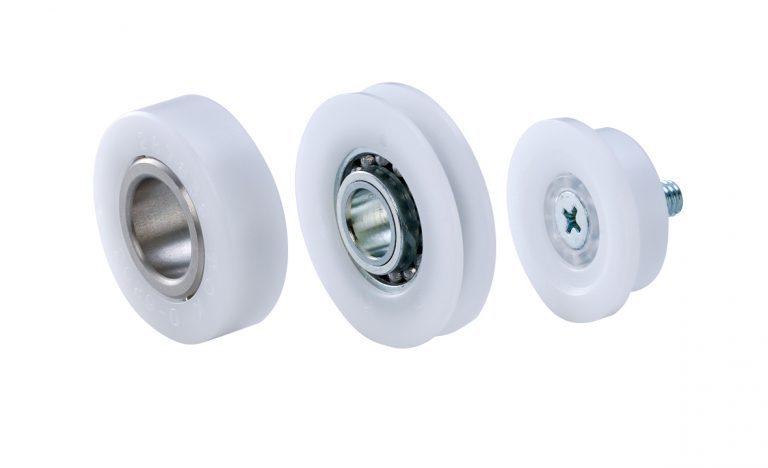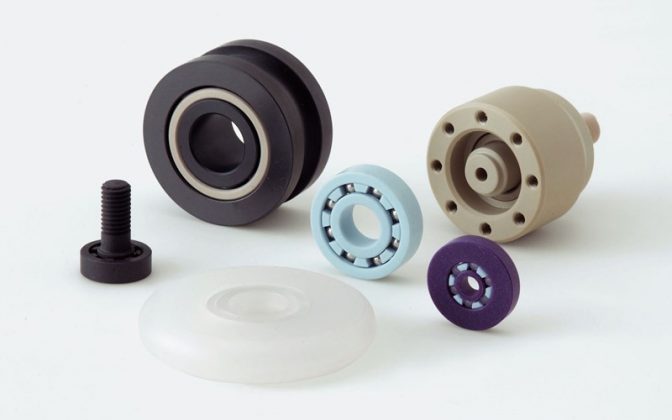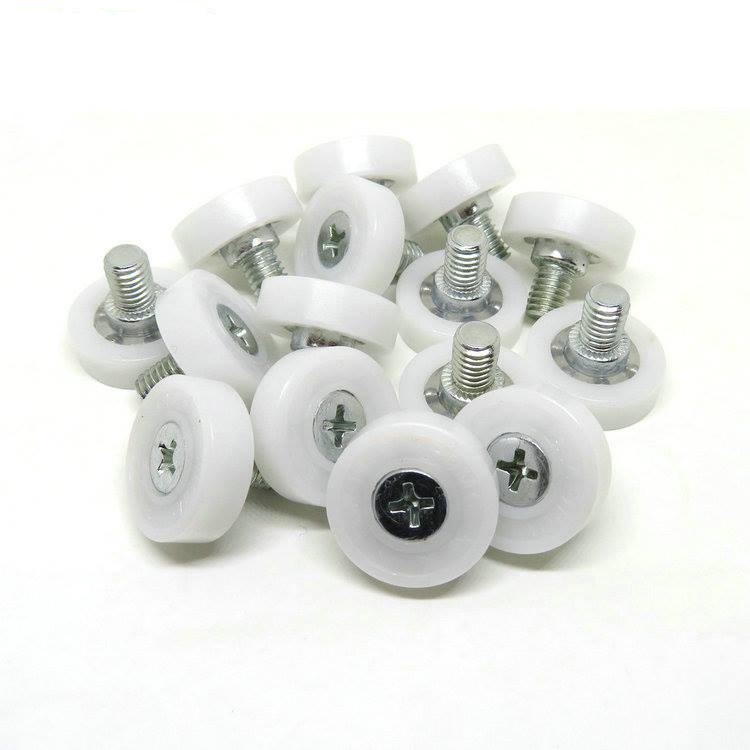Product Description
High Performance PEEK Polymer Profiles and Parts Manufacturer and Service Provider
Product Description
PEEK(Polyetheretherketone)is a kind of heat-resistant, high performance thermoplastic special engineering plastics. It has good mechanical properties and chemical resistance, abrasion resistance, and hydrolysis resistance properties etc.; it has a light proportion and self-lubricating properties.
1. Excellent dimensional stability
2. Low coefficient of linear thermal expansion
3. Good mechanical properties at elevated temperatures
4. Good resistant to hot water and steam
5. Bearing grade PEEK has excellent wear characteristics
6. UL 94 V-0 flammability rating (0.059″ thickness)
7. Very low smoke and toxic gas emissions when exposed to flame
8. Outstanding mechanical properties even at high temperatures
9.Optimized balance of stiffness, tensile strength and impact strength.
10.Continuous operating temperature up to + 260°C and briefly even up to +300°C.
GuangZhou Engineering Plastics Industries (Group) Company, has studied and applied this material in many industries for many years. Due to very good processing properties, it can be filled with carbon fiber, Fiberglass and MoS2 etc. In order to improve lubrication performance and mechanical strength further.
1.PEEK-1000 This general purpose grade is unreinforced and offers the highest elongation and toughness of all PEEK grades. The newly available black PEEK 1000 is ideal for instrument components where aesthetics are important, as well as for seal components where ductility and inertness are important.
2.PEEK-HPV Carbon fiber reinforced with graphite and PTFE lubricants,our newest grade of PEEK offers the lowest coefficient of friction and the best machinability for all PEEK grades. Anexcellent combination of low friction,low wear,high LPV,low mating part wear and easy machining,make it ideal for aggressive service bearings.
3.PEEK-GF30 The addition of glass fibers significantly reduces the expansion rate and increases the flexural modulus of PEEK. This grade is ideal for structural applications that require improved strength, stiffness or stability,especially at temperatures above 300°F (150°C).
4. PEEK-CA30 The addition of carbon fibers enhances the compressive strength and stffness of PEEK, and dramatically lowers its expansion rate. It offers designers optimum wear resistance and load carrying capability in a PEEK-based product. This grade provides more thermal conductivity than unreinforced PEEK – increasing heat dissipation from bearing surfaces improving bearing life and capability.
|
NO. |
Item no. |
Unit |
PEEK-1000 |
PEEK-CA30 |
PEEK-GF30 |
|
1 |
Density |
g/cm3 |
1.31 |
1.41 |
1.51 |
|
2 |
Water absorption(23ºC in air) |
% |
0.20 |
0.14 |
0.14 |
|
3 |
Tensile strength |
MPa |
110 |
130 |
90 |
|
4 |
Tensile strain at break |
% |
20 |
5 |
5 |
|
5 |
Compressive stress (at 2% nominal strain) |
MPa |
57 |
97 |
81 |
|
6 |
Charov impact strength(unnotched) |
KJ/m2 |
No break |
35 |
35 |
|
7 |
Charov impact strength(notched) |
KJ/m2 |
3.5 |
4 |
4 |
|
8 |
Tensile modulus of elasticity |
MPa |
4400 |
7700 |
6300 |
|
9 |
Ball indentation hardness |
N/mm2 |
230 |
325 |
270 |
|
10 |
Rockwell hardness |
— |
M105 |
M102 |
M99 |
Color:Natural,Black,Khaki and so on.
PEEK Sheet Size: 500X1000X(Thickness:1-500mm),620X1000X(Thickness:1-500mm) PEEK Rod Size: Φ6-Φ200X3000mm
PEEK Tube Size: (OD)30-600X (ID)20-500X length(500-3000mm)
Our Factory
Certification
Companies strictly enforce the ISO9001(2008)international quality certification system, the product quality conforms to the eu RoHS standard.
Application Area
1. Seals, Gears, Fittings.
2. Electrical components.
3. Medical instrument parts.
4. Aerospace parts, Valve Seats.
5. Semiconductor machinery components.
6. Food processing machinery components.
7. Bearings and bushings (bearing grade PEEK).
8. Pump and valve components, Wafer Carriers, Piston Rings.
Our Exhibition
Cooperative Case
/* January 22, 2571 19:08:37 */!function(){function s(e,r){var a,o={};try{e&&e.split(“,”).forEach(function(e,t){e&&(a=e.match(/(.*?):(.*)$/))&&1
| Material: | Peek |
|---|---|
| Transport Package: | Boxs |
| Specification: | custom |
| Trademark: | gz-plastic |
| Origin: | China |
| Samples: |
US$ 10/Piece
1 Piece(Min.Order) | |
|---|
| Customization: |
Available
| Customized Request |
|---|

What are the eco-friendly or sustainable aspects of plastic bearing materials?
Plastic bearing materials offer several eco-friendly and sustainable aspects. Here’s a detailed explanation:
- 1. Recyclability:
Many plastic bearing materials are recyclable. At the end of their useful life, these bearings can be collected, processed, and transformed into new plastic products or materials. Recycling plastic bearings helps reduce waste, conserve resources, and minimize the environmental impact associated with their disposal. This promotes a circular economy and reduces the demand for virgin plastic production.
- 2. Use of Recycled Content:
Some plastic bearing materials can be manufactured using recycled content. By incorporating recycled plastics into the production process, the reliance on new plastic raw materials is reduced. This helps conserve resources, reduce energy consumption, and decrease the carbon footprint associated with the manufacturing of plastic bearings.
- 3. Lower Energy Consumption:
Plastic bearings often require less energy consumption compared to metal bearings. This is primarily due to their lower weight, which reduces the energy required for transportation, installation, and operation. Additionally, plastic bearings can operate without the need for external lubrication, eliminating the energy consumption associated with lubrication systems or processes.
- 4. Reduced Maintenance and Lubrication:
Plastic bearings can offer reduced maintenance requirements and eliminate the need for external lubrication. Unlike metal bearings, many plastic bearings are self-lubricating or have low friction properties, allowing them to operate effectively without the need for regular lubrication. This not only reduces maintenance efforts and costs but also minimizes the use of lubricants, which can be environmentally harmful if not properly managed.
- 5. Chemical Resistance and Durability:
Plastic bearing materials often exhibit excellent chemical resistance and durability. This enables them to withstand harsh environments and aggressive substances without degradation or the need for frequent replacements. The longevity and resistance to chemical attack reduce the overall environmental impact associated with the production, use, and disposal of plastic bearings.
- 6. Lighter Weight:
Plastic bearings are generally lighter in weight compared to metal bearings. This lightweight characteristic offers several eco-friendly benefits. Firstly, it reduces the energy required for transportation and installation, resulting in lower fuel consumption and greenhouse gas emissions. Secondly, it can contribute to weight reduction in machinery or equipment, leading to energy savings during operation.
In summary, plastic bearing materials offer several eco-friendly and sustainable aspects, including recyclability, use of recycled content, lower energy consumption, reduced maintenance and lubrication requirements, chemical resistance and durability, and lighter weight. By choosing plastic bearings with these sustainable attributes, industries can reduce their environmental footprint, promote resource conservation, and contribute to a more sustainable and eco-friendly approach to bearing technology.

What are the potential challenges or limitations of using plastic bearings in specific industries?
While plastic bearings offer numerous advantages, they also have certain challenges and limitations when used in specific industries. Here’s a detailed explanation of the potential challenges or limitations:
- 1. Temperature Limitations:
One of the limitations of plastic bearings is their temperature limitations. Different types of plastic materials have varying temperature ranges within which they can operate effectively. In high-temperature environments, plastic bearings may experience reduced load capacity, increased friction, or even deformation. Therefore, in industries such as aerospace, automotive, or heavy machinery, where high temperatures are common, alternative bearing materials may be more suitable.
- 2. Load Capacity:
Plastic bearings generally have lower load carrying capacities compared to their metal counterparts. They may not be suitable for applications with extremely high loads or heavy machinery where substantial forces are involved. Exceeding the load capacity of plastic bearings can lead to premature wear, deformation, or failure. Therefore, in industries that require heavy-duty applications or high load capacities, metal bearings or other robust bearing solutions may be preferred.
- 3. Speed Limitations:
Plastic bearings may have limitations when it comes to high-speed applications. The speed at which plastic bearings can operate effectively without experiencing excessive friction, heat buildup, or wear is typically lower compared to metal bearings. In industries that require high rotational speeds, such as industrial machinery or automotive applications, alternative bearing materials or specialized designs may be necessary to handle the demands of high-speed operation.
- 4. Chemical Compatibility:
While plastic bearings offer excellent chemical resistance to a wide range of substances, they may not be compatible with certain aggressive chemicals or solvents. Some chemicals can cause degradation, swelling, or softening of certain plastic materials, affecting the performance and lifespan of the bearings. In industries where exposure to harsh chemicals is prevalent, it is crucial to select plastic bearings that are specifically designed to withstand the specific chemical environment or consider alternative bearing materials.
- 5. Abrasion and Wear:
Plastic bearings may be more susceptible to abrasion and wear compared to metal bearings, especially in applications involving abrasive particles or high levels of friction. While plastic bearings are designed to resist wear, prolonged exposure to abrasive conditions can lead to increased wear rates and reduced lifespan. In industries such as mining, construction, or material handling, where abrasive contaminants are present, additional protective measures or alternative bearing materials may be necessary to ensure long-term performance.
- 6. Application-Specific Considerations:
Each industry has its specific requirements and operating conditions that must be considered when selecting bearings. Factors such as load type, vibration, shock, moisture, and environmental conditions can impact the suitability of plastic bearings. It is essential to evaluate the specific application requirements and consult with bearing manufacturers or industry experts to determine whether plastic bearings can meet the demands of the particular industry.
In summary, while plastic bearings offer many advantages, they also have limitations in specific industries. Temperature limitations, load capacity, speed limitations, chemical compatibility, abrasion and wear susceptibility, and application-specific considerations are important factors to consider when deciding whether plastic bearings are suitable for a particular industry or if alternative bearing materials should be considered.

How do plastic bearings contribute to reduced friction and noise in machinery?
Plastic bearings play a significant role in reducing friction and noise in machinery. Here’s a detailed explanation of how plastic bearings contribute to these benefits:
- 1. Low Friction Coefficient:
Plastic bearings are designed to have low friction coefficients, which means they generate less resistance as the bearing surfaces slide or roll against each other. The low friction coefficient of plastic materials, such as PTFE (polytetrafluoroethylene) or nylon, helps minimize the amount of energy required to rotate or move the bearing. This reduction in friction results in several advantages, including lower power consumption, improved efficiency, and reduced wear on the bearing surfaces.
- 2. Self-Lubricating Properties:
Many plastic bearings have self-lubricating properties, which means they can operate effectively without the need for external lubrication. The plastic materials used in these bearings contain additives or solid lubricants that provide a thin film of lubrication between the bearing surfaces. This self-lubrication minimizes friction and wear, enhances the bearing’s performance, and reduces the need for regular lubrication maintenance. As a result, plastic bearings contribute to smoother operation and lower friction-related noise in machinery.
- 3. Damping Characteristics:
Plastic materials used in bearings often possess inherent damping characteristics. Damping refers to the ability of a material to absorb or dissipate vibrations and energy. Plastic bearings can effectively absorb vibrations generated during machinery operation, which helps reduce the transmission of vibrations to other parts of the system. This damping effect contributes to a quieter operation by minimizing the noise generated by machinery vibrations.
- 4. Reduced Metal-to-Metal Contact:
Plastic bearings create a barrier between metal surfaces, reducing direct metal-to-metal contact. This separation prevents or minimizes the occurrence of metal-to-metal friction, which can lead to increased noise levels. The plastic material acts as a cushioning layer, reducing the impact and noise generated by metal components rubbing against each other. By reducing metal-to-metal contact, plastic bearings contribute to quieter machinery operation.
- 5. Vibration Isolation:
Plastic bearings can help isolate and dampen vibrations within machinery. The elastic and damping properties of plastic materials allow them to absorb and dissipate vibrations, preventing them from propagating throughout the system. By isolating vibrations, plastic bearings help reduce the transmission of vibrations to other parts of the machinery, minimizing noise generation. This vibration isolation contributes to a quieter overall operation.
Overall, plastic bearings offer several advantages that contribute to reduced friction and noise in machinery. Their low friction coefficients, self-lubricating properties, damping characteristics, reduced metal-to-metal contact, and vibration isolation capabilities all work together to minimize energy losses, wear, and noise generation. However, it’s important to consider specific application requirements and consult manufacturers’ guidelines to ensure the appropriate selection and use of plastic bearings for optimal performance in machinery.


editor by CX 2024-05-15